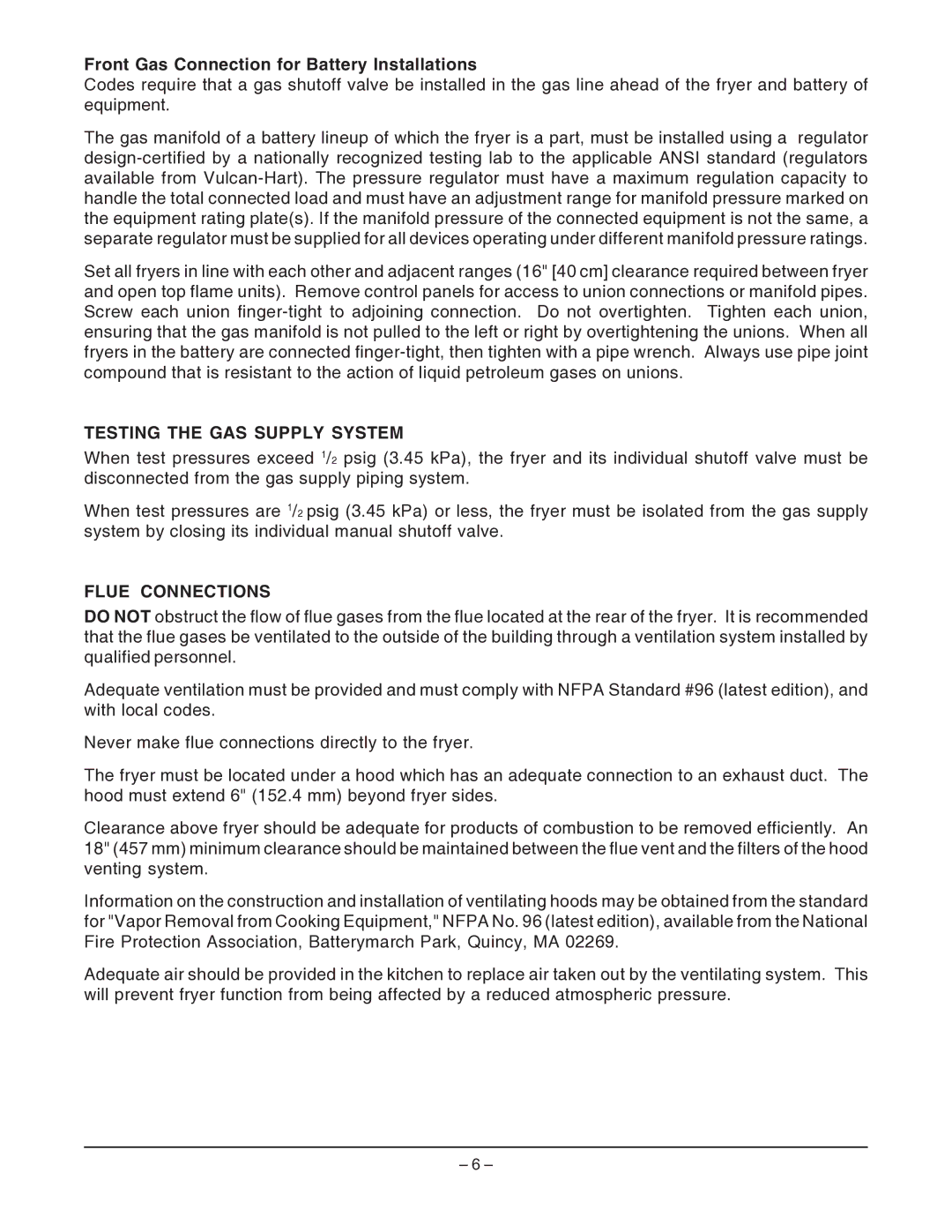GHF90, GHF91 specifications
Vulcan-Hart is renowned in the commercial food service industry for providing high-quality cooking appliances, and the GHF91 and GHF90 models stand as testament to their commitment to excellence. These heavy-duty gas fryers are engineered to meet the demanding needs of busy kitchens, making them essential for restaurants, catering services, and other food establishments.One of the most significant features of the GHF91 and GHF90 is their efficient heating systems. Both models utilize advanced heating technology, providing quick recovery times and consistent cooking temperatures. This efficiency not only saves energy but also ensures that food is cooked thoroughly and evenly, resulting in delicious and perfectly fried items.
The design of these fryers emphasizes usability and convenience. The GHF91 and GHF90 models come equipped with intuitive controls that allow kitchen staff to adjust temperatures with ease. This feature is critical for achieving optimal frying results, especially when dealing with different types of food that require varying cooking times and temperatures.
Both models are built with durable materials designed to withstand the rigors of high-traffic kitchen environments. The stainless steel construction not only adds to the fryers’ resilience but also facilitates easy cleaning and maintenance. This is particularly important for health and safety standards in food service operations.
Safety is a primary consideration in the design of the GHF91 and GHF90. They feature built-in safety mechanisms that prevent overheating and ensure safe operation, reducing the risk of accidents in the kitchen. Additionally, their low-profile design allows them to fit seamlessly into various kitchen layouts, optimizing space without compromising performance.
Versatility is another hallmark of these fryers. The GHF91 and GHF90 are designed to handle a wide range of food items, from crispy chicken to golden-brown French fries and onion rings. Depending on the specific model selected, operators can choose from various tank sizes and configurations to meet their unique frying needs.
In conclusion, the Vulcan-Hart GHF91 and GHF90 fryers exemplify the perfect blend of technology, durability, and safety. Their advanced heating systems, user-friendly controls, and robust construction make them ideal choices for any commercial kitchen. With these fryers, food service operators can consistently deliver high-quality fried foods that keep customers coming back for more.
